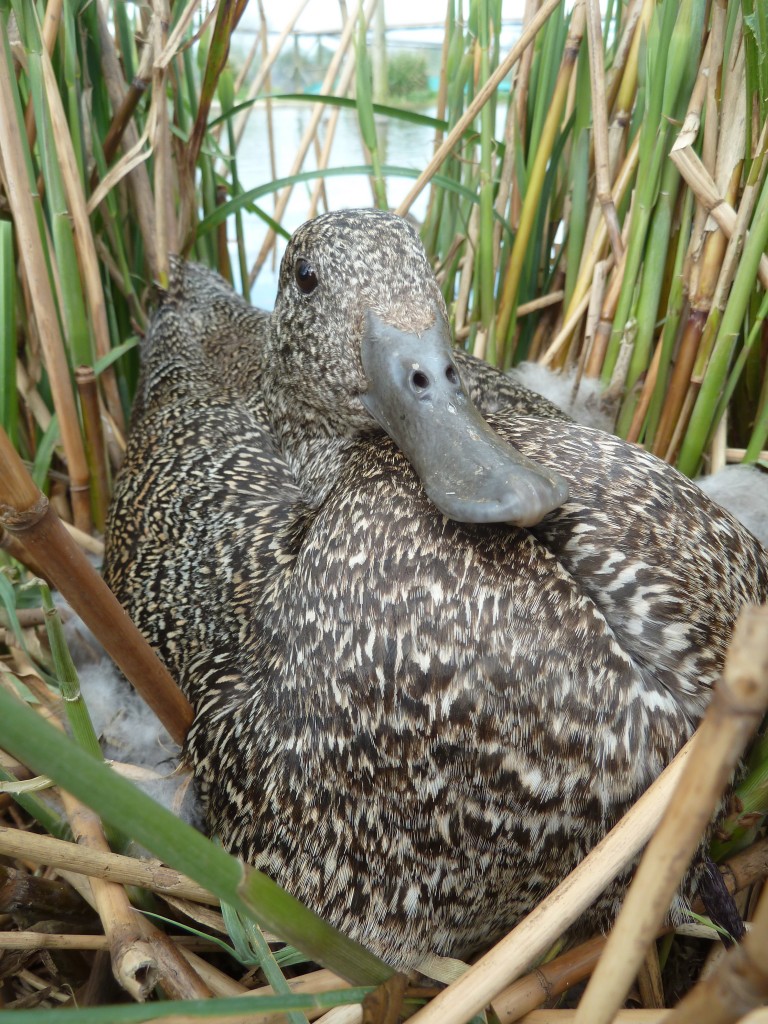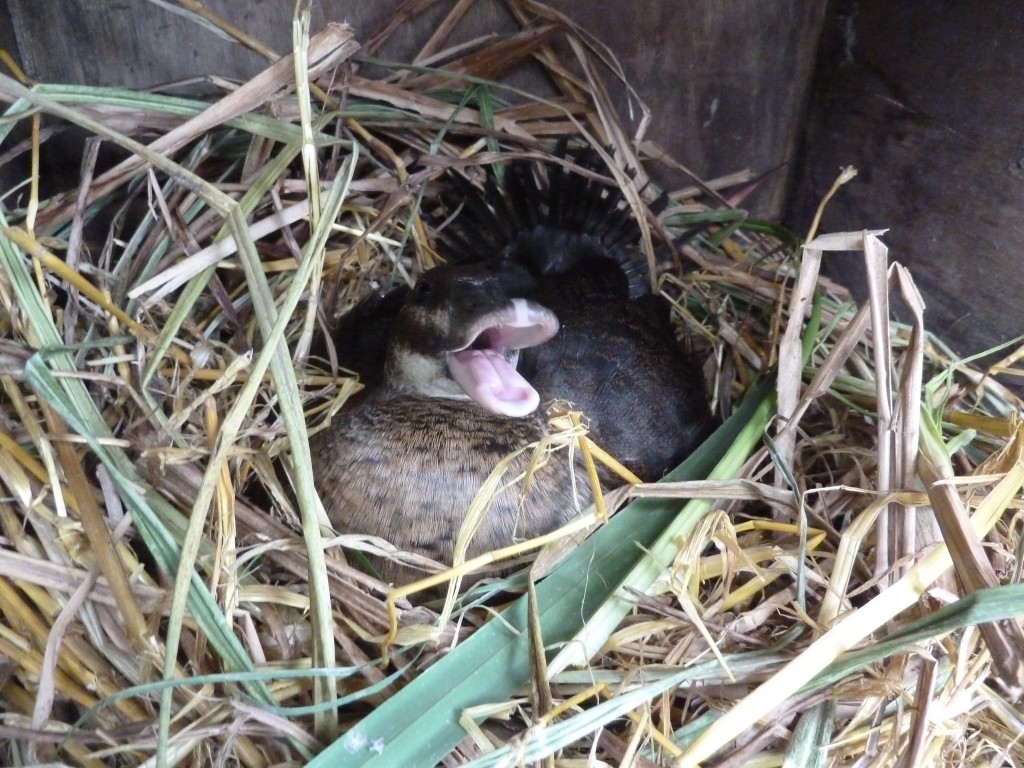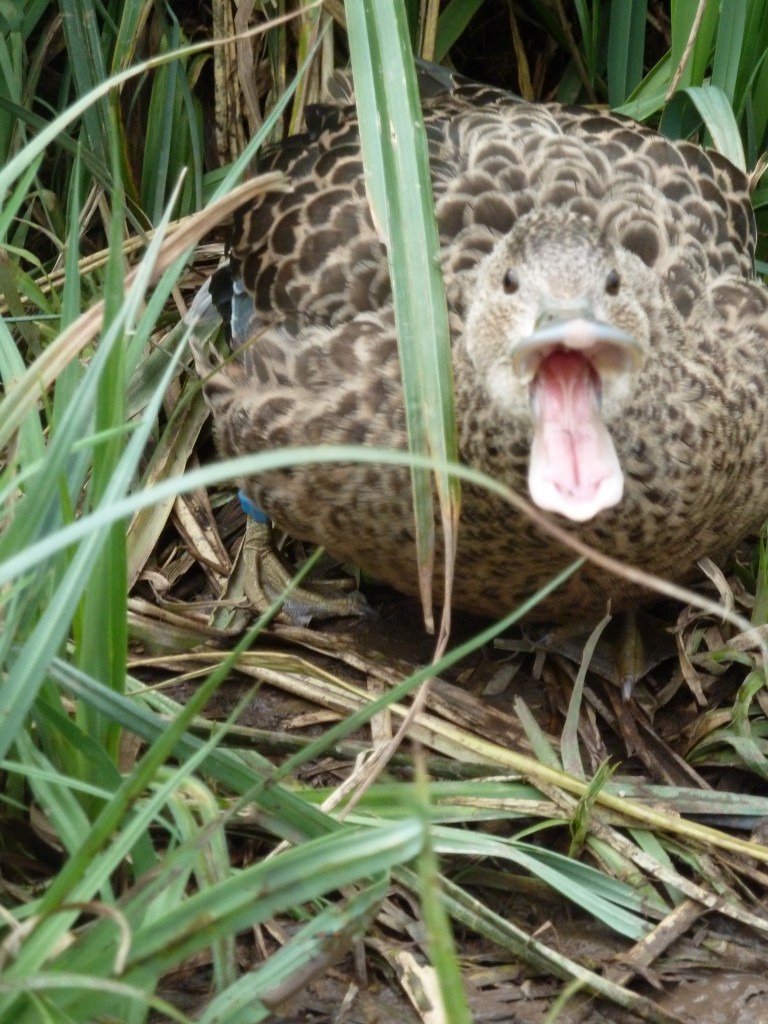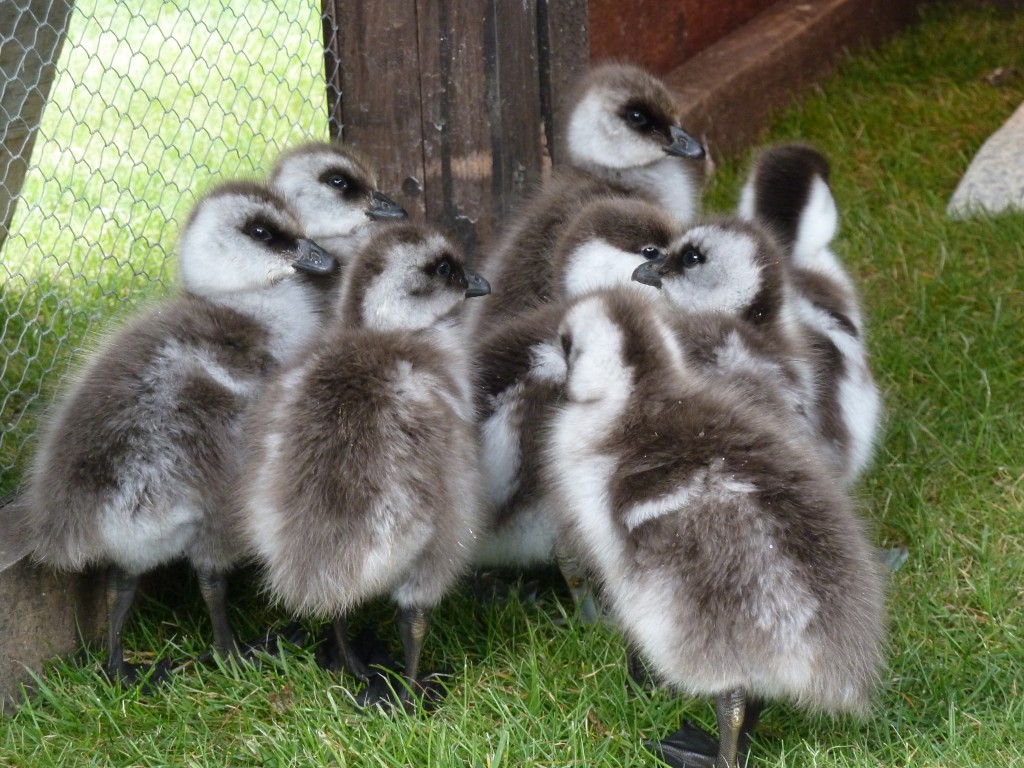Let's hear it for the girls!
There are some gorgeous little natural incubators dotted about the WWT breeding aviaries at the moment. I thought that with so many photo opportunities around I would give you a short class in 'Egg defence.'
As with all expectant mothers, it goes without saying that all ducks exhibit a different technique when it comes to bringing up their own. Some species camouflage, others make protective balls and bowers, some have a "kick-butt" attitude, and others run for the hills!
Below are a selection of three yummy mummies currently incubating eggs, in my estimated order of perceived annoyance!

I know I'm pretty obsessed with Freckled duck, but just look at her! This little beauty is the most dedicated, reliable, plump little egg machine I have ever seen. This species has a brilliant natural camouflage in their native nesting sites, and wouldn't look quite so conspicuous as they do here... Where camouflage fails her however, dogged determination kicks in. There is nothing that can "scare" a Freck off her nest. They sit there like a big pudding, fluffing out their cheeks as if to say "no. just no." This look of indignation is just classic. This particular bird is in fact so determined not to move that she will even let me slide a hand underneath her and lift her up so as to take a peek underneath! She sits on my hand the whole time, fluffed up and stoic in her determination to stay. Once I have had a quick check-up, I can put her straight back on top of her eggs. There is no ruffling this bird's determination! As such I would trust her to incubate the most precious of eggs. Thankfully then, her eggs are just such a clutch :)

If your can regard Mrs. Freck as a reliable and grumpy mum, you can guarantee that the Argentine Ruddy duck will kick it up a gear! This little beast gets very stroppy indeed in the defence of her eggs. Just like her freckled friend, you can lift her up and off to take a peek, but rather than just a squeak of annoyance this wee beastie attacks! I have had several bruises off this little madam over the years. Sometimes you can stand up to leave with the duck still attached to your arm skin. Ouch!
The reliability of the stifftail family is legendary, and this beautiful girl lays the best eggs in the best nest. We always have a back up breeding pair for every species, just in case they don't succeed. It is a testament to the skills of this little rascal over the last 3 years that she is the one and only breeding Argentine Ruddy female at WWT Slimbridge.

This, I have to admit, took me completely by surprise. There was no way in my wildest dreams that I thought a diminutive little shoveler type could get so offensive! In this particular case I didn't even want to look; I was just walking past!
As a sexually dimorphic species, the female shoveler has dowdy brown plumage for the purpose of incubation camouflage. The male plays no part in incubation, and instead lounges around in the sun nearby, occasionally giving her the odd danger warning sign.
This feisty little madam literally jumped off her nest, and charged. She didn't peck, nor bite, rather she was rippling with such apoplectical anger that in fact, I ran away! Whilst this tactic might not do her any favours in the wild, it will work ten-fold at WWT Slimbridge because the Cape shoveler is so important to us that we would do anything to keep them happy.

Why look at their nests? Every egg at WWT is precious. Many of the species here are special, distinct or rare in both the wild and captivity. Whilst predation is a fact of life, there is nothing more heartbreaking than losing juvenile birds to parasites or disease. For every nest found at WWT, the eggs are checked between 10 and 20 days. We do this to remove infertile or rotten eggs that might damage the remaining eggs through infection. We do this to save the female effort if her eggs are infertile. We do this to help improve or protect the nest if she has designed it badly. All of these are individually assessed investigations in order to help and improve every female's chances of success.
The Greater Magellans above are a perfect case in point. If I had never looked at their eggs, I would never have found the crack in one egg, and without disinfecting and taping that cracked egg, there could be 5 little geese in the photo above and not 6.
So let's here it for the girls!

